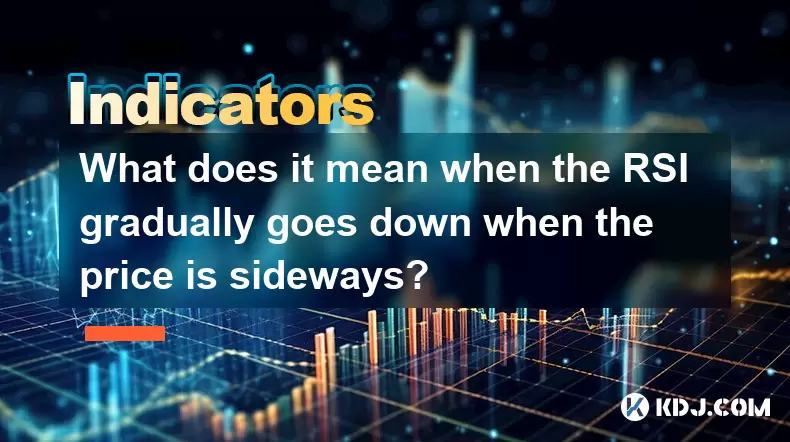-
 Bitcoin
Bitcoin $118,209.3536
1.16% -
 Ethereum
Ethereum $3,151.7546
5.98% -
 XRP
XRP $2.9277
2.35% -
 Tether USDt
Tether USDt $1.0000
0.00% -
 BNB
BNB $689.7099
1.26% -
 Solana
Solana $163.4270
1.91% -
 USDC
USDC $1.0000
0.02% -
 Dogecoin
Dogecoin $0.1983
3.74% -
 TRON
TRON $0.3008
0.51% -
 Cardano
Cardano $0.7435
2.86% -
 Hyperliquid
Hyperliquid $47.6547
-0.48% -
 Stellar
Stellar $0.4625
2.79% -
 Sui
Sui $3.9921
2.71% -
 Chainlink
Chainlink $16.0608
4.23% -
 Hedera
Hedera $0.2348
1.56% -
 Bitcoin Cash
Bitcoin Cash $496.6985
1.25% -
 Avalanche
Avalanche $21.9038
5.41% -
 UNUS SED LEO
UNUS SED LEO $8.8356
-1.88% -
 Shiba Inu
Shiba Inu $0.0...01364
5.31% -
 Toncoin
Toncoin $3.1102
4.35% -
 Litecoin
Litecoin $95.9756
3.59% -
 Polkadot
Polkadot $4.0925
5.78% -
 Monero
Monero $333.7622
-1.44% -
 Uniswap
Uniswap $9.1968
2.25% -
 Bitget Token
Bitget Token $4.6378
6.23% -
 Pepe
Pepe $0.0...01282
6.77% -
 Dai
Dai $1.0002
0.03% -
 Ethena USDe
Ethena USDe $1.0005
0.00% -
 Aave
Aave $329.9143
4.49% -
 Bittensor
Bittensor $441.4995
6.89%
What does it mean when the RSI gradually goes down when the price is sideways?
A declining RSI during sideways price action in crypto signals hidden bearish momentum, often preceding a breakdown or trend reversal.
Jun 29, 2025 at 04:42 pm

Understanding the RSI Indicator in Cryptocurrency Trading
The Relative Strength Index (RSI) is a momentum oscillator widely used in cryptocurrency trading to measure the speed and change of price movements. It typically ranges from 0 to 100, with levels above 70 indicating overbought conditions and below 30 signaling oversold conditions. Traders rely on RSI to identify potential reversals or confirm trends.
When analyzing price action alongside RSI, it's crucial to understand that divergences can provide valuable insights into market sentiment. One such scenario occurs when the RSI gradually declines while the price remains sideways. This phenomenon may not be immediately intuitive, especially for novice traders.
Key Takeaway: The RSI indicator provides insight into underlying buying or selling pressure, even when prices appear stagnant.
What Happens When Price Is Sideways?
A sideways price movement—also known as a consolidation phase—occurs when the price of a cryptocurrency trades within a relatively tight range without showing a clear upward or downward trend. During this period, neither buyers nor sellers are able to push the price decisively in one direction.
This phase often reflects market indecision, where traders are waiting for a catalyst or new information before taking positions. In such an environment, volume typically decreases, and volatility remains low.
- Sideways movement suggests equilibrium between supply and demand.
- It may precede a breakout in either direction once momentum returns.
- Support and resistance levels become critical during these phases.
Important Note: A sideways price pattern does not necessarily mean there is no underlying shift in momentum—it could be masked by short-term balance.
Why Does RSI Decline While Price Stays Flat?
If the RSI begins to decline while the price remains flat, it indicates that the downward momentum is increasing, even though the price hasn't yet reflected a strong downtrend. This subtle divergence suggests that sellers are gaining strength incrementally, which may not be visible in the price chart alone.
This situation arises because:
- The RSI measures the difference between higher and lower closes over a given period (usually 14).
- If recent closes are consistently weaker—even slightly—it drags the RSI down.
- The price may still be consolidating due to short-term support holding, but the internal momentum is deteriorating.
Insight: A declining RSI in a sideways market signals weakening bullish control and growing bearish pressure beneath the surface.
How to Interpret This Divergence in Crypto Charts
In cryptocurrency markets, which are known for their high volatility and emotional trading, understanding such hidden divergences becomes vital. A gradual drop in RSI while the price moves sideways is considered a bearish divergence.
To interpret this correctly:
Look at the slope of the RSI line—a consistent descent indicates increasing bearish dominance.
Check if higher time frames also reflect similar patterns, confirming the signal.
Monitor volume levels—declining volume during a sideways move combined with falling RSI may indicate lack of buyer interest.
Identify key support zones where the price might stabilize.
Watch for candlestick patterns that might signal a breakdown.
Use other indicators like MACD or moving averages to corroborate the RSI reading.
Critical Point: This type of divergence often precedes a breakdown or trend reversal, especially if the sideways pattern has lasted for several days.
Practical Examples in Real Crypto Charts
Let’s consider a real-world example using Bitcoin (BTC) during a consolidation phase in early 2024. Over a two-week period, BTC traded between $62,000 and $64,000, showing no clear direction. However, during that same period, the RSI slowly declined from 55 to 40.
- Despite the price staying flat, the RSI showed consistent weakness.
- Volume during this phase was relatively low, suggesting that buyers were not stepping in aggressively.
- Eventually, the price broke below the $62,000 support level and fell to $58,000 within a few days.
Another example can be seen with Ethereum (ETH) in late 2023. ETH remained in a tight range for nearly three weeks while its RSI steadily dropped from 58 to 38. Shortly after, the price fell sharply, confirming the hidden bearish signal.
Observation: These examples demonstrate how a gradually falling RSI during consolidation can serve as a precursor to a significant price drop.
How to Trade This Scenario: A Step-by-Step Guide
If you notice the RSI gradually going down while the price is sideways, here’s how you can approach your trading strategy:
- Identify the consolidation zone by drawing horizontal support and resistance lines.
- Confirm the trendless condition using tools like Bollinger Bands or Average True Range (ATR).
- Plot the RSI and look for a consistent downward slope over multiple periods.
- Compare volume levels—lower volume confirms lack of participation.
- Watch for breakout candles that close below key support levels.
- Consider entering a short position after confirmation of the breakdown.
- Place a stop-loss just above the upper boundary of the consolidation.
- Set take-profit targets based on previous swing lows or Fibonacci extensions.
Caution: Always wait for a confirmed breakdown before entering a trade—false breakouts are common in crypto markets.
Frequently Asked Questions
Q1: Can a rising RSI during a sideways price movement indicate a bullish signal?
Yes, if the RSI starts to rise while the price remains flat, it may suggest that buying pressure is building up, potentially leading to an upward breakout.
Q2: How reliable is RSI divergence in highly volatile crypto markets?
While RSI divergence is useful, it should be used in conjunction with other tools like volume analysis, moving averages, and trendlines, especially in volatile environments where false signals are common.
Q3: Should I ignore a sideways price pattern if RSI is stable?
Not necessarily. A stable RSI during a sideways move suggests balanced market conditions, and it may be wise to wait for a breakout rather than anticipate a reversal.
Q4: What timeframe is best for observing RSI behavior during consolidation?
Using a combination of higher timeframes (like 4-hour or daily charts) gives more reliable signals compared to shorter intervals like 15-minute or 1-hour charts.
Disclaimer:info@kdj.com
The information provided is not trading advice. kdj.com does not assume any responsibility for any investments made based on the information provided in this article. Cryptocurrencies are highly volatile and it is highly recommended that you invest with caution after thorough research!
If you believe that the content used on this website infringes your copyright, please contact us immediately (info@kdj.com) and we will delete it promptly.
- Animal Memecoins Roar Back: HEGE, BONK, and the Solana Pack Lead the Charge
- 2025-07-16 20:50:13
- Pumpfun's PUMP Token: SOL Transfers, Buybacks, and the Wild West of Meme Coins
- 2025-07-16 20:30:13
- Trump, HTX, and USDT: Riding the Crypto Wave in 2025
- 2025-07-16 20:50:13
- SPX6900, Meme Coins, and the Quest for 1000x Gains: A New Yorker's Take
- 2025-07-16 20:30:13
- Eclipse Airdrop and Token Supply: Navigating the Crypto Landscape
- 2025-07-16 18:50:13
- Solana Price, Zebec Network, and Remittix: Decoding the Crypto Signals
- 2025-07-16 18:30:13
Related knowledge

Advanced RSI strategies for crypto
Jul 13,2025 at 11:01am
Understanding the Basics of RSI in Cryptocurrency TradingThe Relative Strength Index (RSI) is a momentum oscillator used to measure the speed and chan...

Crypto RSI for day trading
Jul 12,2025 at 11:14am
Understanding RSI in the Context of Cryptocurrency TradingThe Relative Strength Index (RSI) is a momentum oscillator used to measure the speed and cha...

Crypto RSI for scalping
Jul 12,2025 at 11:00pm
Understanding RSI in the Context of Crypto TradingThe Relative Strength Index (RSI) is a momentum oscillator widely used by traders to measure the spe...

What does an RSI of 30 mean in crypto
Jul 15,2025 at 07:07pm
Understanding RSI in Cryptocurrency TradingRelative Strength Index (RSI) is a momentum oscillator widely used in cryptocurrency trading to measure the...

What does an RSI of 70 mean in crypto
Jul 13,2025 at 06:07pm
Understanding the RSI Indicator in Cryptocurrency TradingThe Relative Strength Index (RSI) is a widely used technical analysis tool that helps traders...

Does RSI work in a bear market for crypto
Jul 16,2025 at 01:36pm
Understanding RSI in Cryptocurrency TradingThe Relative Strength Index (RSI) is a momentum oscillator used by traders to measure the speed and change ...

Advanced RSI strategies for crypto
Jul 13,2025 at 11:01am
Understanding the Basics of RSI in Cryptocurrency TradingThe Relative Strength Index (RSI) is a momentum oscillator used to measure the speed and chan...

Crypto RSI for day trading
Jul 12,2025 at 11:14am
Understanding RSI in the Context of Cryptocurrency TradingThe Relative Strength Index (RSI) is a momentum oscillator used to measure the speed and cha...

Crypto RSI for scalping
Jul 12,2025 at 11:00pm
Understanding RSI in the Context of Crypto TradingThe Relative Strength Index (RSI) is a momentum oscillator widely used by traders to measure the spe...

What does an RSI of 30 mean in crypto
Jul 15,2025 at 07:07pm
Understanding RSI in Cryptocurrency TradingRelative Strength Index (RSI) is a momentum oscillator widely used in cryptocurrency trading to measure the...

What does an RSI of 70 mean in crypto
Jul 13,2025 at 06:07pm
Understanding the RSI Indicator in Cryptocurrency TradingThe Relative Strength Index (RSI) is a widely used technical analysis tool that helps traders...

Does RSI work in a bear market for crypto
Jul 16,2025 at 01:36pm
Understanding RSI in Cryptocurrency TradingThe Relative Strength Index (RSI) is a momentum oscillator used by traders to measure the speed and change ...
See all articles

























































































